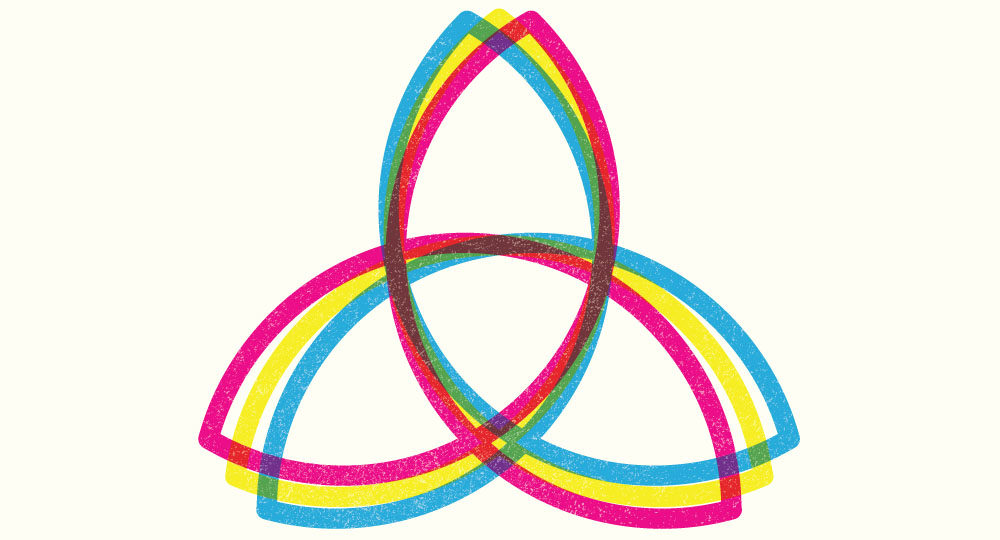One God, Three Entities Part Two
In his 13 basic principles, renowned Rabbi Moshe Ben Maimon (1135–1205), also known as Maimonides and the great Rambam, replaced the Hebrew word ehad (“one”) with yahid (“only one”) to describe God’s nature. Ehad often denotes a compound unity, whereas yahid does not.
Although the idea of yahid stands in contrast to the Old Testament, rabbinical Judaism embraced it and argues that God is an undivided wholeness. However, the Bible provides many examples that clearly testify to a plurality in the one God. God is one, but not one entity. There is a single Godhead, one God to whom there is no equal; but that one God exists in a plurality of entities.
The Hebrew Scriptures contain verses that refer to each of the entities in the Godhead and clearly indicate their number.
The Spirit of God
And the Spirit of God was hovering over the face of the waters (Gen. 1:2).
The Spirit of God existed from the beginning. He took part in the creation. But the Spirit was never created; therefore He is equal to God. The Spirit of God is an independent, vibrant entity, not merely a trait or dormant, sense-less power. The Spirit of God can be grieved; therefore He is a person in Himself.
There are further examples of the Spirit’s existence as an individual entity:
The Spirit of God has made me. Do not cast me away from Your presence, and do not take Your Holy Spirit from me. Where can I go from Your Spirit? Or where can I flee from Your presence? The Spirit of the Lᴏʀᴅ shall rest upon Him, the Spirit of wisdom and understanding, the Spirit of counsel and might, the Spirit of knowledge and of the fear of the Lᴏʀᴅ. Who has directed the Spirit of the Lᴏʀᴅ, or as His counselor has taught Him? (Job 33:4; Ps. 51:11; 139:7; Isa. 11:2; 40:13).
But they rebelled and grieved His Holy Spirit…“Where is He who put His Holy Spirit within them…?” As a beast goes down into the valley, and the Spirit of the Lᴏʀᴅ causes him to rest, so You lead Your people, to make Yourself a glorious name (63:10–11, 14).
And I will pour on the house of David and on the inhabitants of Jerusalem the Spirit of grace and supplication; then they will look on Me whom they pierced. Yes, they will mourn for Him as one mourns for his only son, and grieve for Him as one grieves for a firstborn (Zech. 12:10).
Seen and Unseen
Clearly, at least two entities compose the Godhead.
(1) An entity no one can see face to face and live: “But He said, ‘You cannot see My face; for no man shall see Me, and live’” (Ex. 33:20).
God was speaking to Moses and promised to bless and accompany him throughout the Israelites’ journey in the desert. Moses wanted to see the face of the Lord who was speaking to him, but was refused. Finally Moses was allowed to see the back of the One with whom he spoke; but he was not allowed to see His face.
If he had seen the entity’s face, he would have died instantly. Therefore, Moses clearly spoke with a God entity whose face he was forbidden to see.
(2) An entity man could see face to face: “So the Lᴏʀᴅ spoke to Moses face to face, as a man speaks to his friend” (Ex. 33:11).
The same chapter describes a special encounter between God and Moses. To emphasize the physical closeness between them, the verse says the encounter took place “face to face,” as a man speaks to a friend. This meeting was not a vision, dream, or voice heard from heaven, but a face-to-face dialogue.
According to Jewish rabbinical opinion, the Lord spoke to Moses through a reflected image. However, this view is inconsistent with God’s Word. If the Lord had spoken to Moses through a reflection, the verse would have said so instead of saying “face to face, as a man speaks to his friend.”
Using a literal, grammatical interpretation of the text, it becomes evident that verses 11 and 20 speak of two separate entities, both of which are referred to as “Lᴏʀᴅ.”
Another example of a visible entity within the Godhead is found in Exodus 24:9–11. Moses, Aaron, Aaron’s sons Nadab and Abihu, and 70 elders of Israel ascended Mount Sinai and “saw the God of Israel. And there was under His feet as it were a paved work of sapphire stone….But on the nobles of the children of Israel He did not lay His hand. So they saw God, and they ate and drank” (vv. 10-11).
Isaiah’s Revelation
How many entities make up the Godhead?Isaiah the prophet solved the mystery and cast a light on the relationship between the persons who compose the living God.
In Isaiah 44:6, God says, “I am the First, and I am the Last.” In Isaiah 48, the Lord describes Himself as the One who founded the earth and made the heavens; and He declares that all are ready to do His will.
The Lord continues to speak and says that the kingdoms of those days acted under His sovereignty. Then He says the following:
Come near to Me, hear this: I have not spoken in secret from the beginning; from the time that it was, I was there. And now the Lord Gᴏᴅ [Adonai ʏʜᴠʜ] and His Spirit have sent me (v. 16).
The Hebrew text says, “has sent me.” The verse combines the names Adonai Yehovah [ʏʜᴠʜ] into one entity, using the singular verb form “has sent” rather than “have sent.”
Thus the speaker is God (entity one). And He was sent by the Lord Gᴏᴅ (entity two) and His Spirit (entity three). Isaiah teaches that the oneness of the Godhead is comprised of three entities: The Spirit of God and two others who are called “Lord.”
Therefore, the meaning of the Lord’s words in the Shema of Deuteronomy 6:4 becomes obvious: “Hear, O Israel: The Lᴏʀᴅ our God, the Lᴏʀᴅ is one.” The names of the Lord appear three times in this verse, which ends with the word ehad—“one”—to teach us that one Godhead is composed of three entities.






